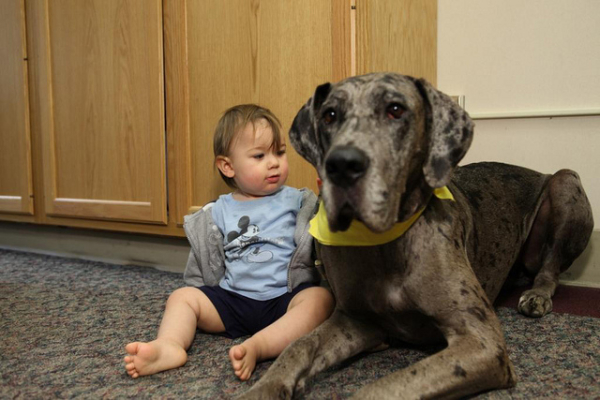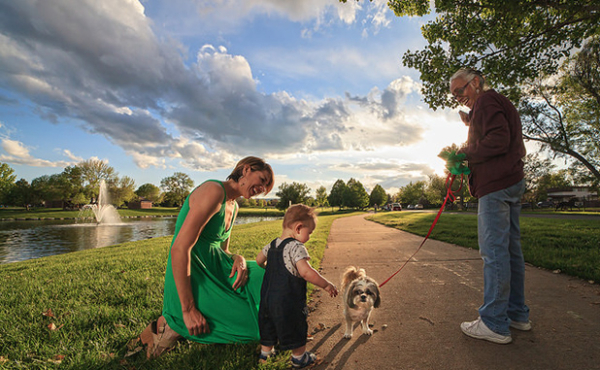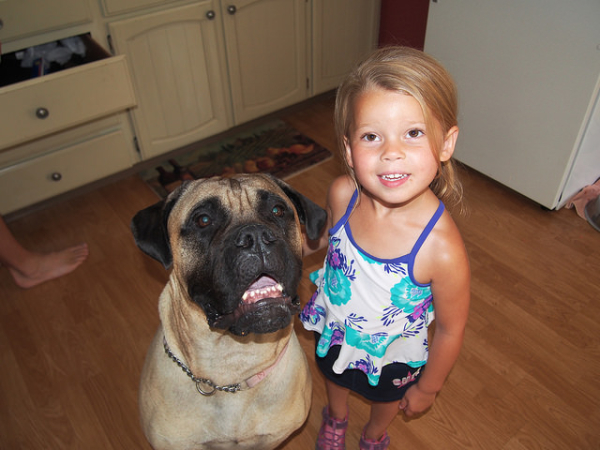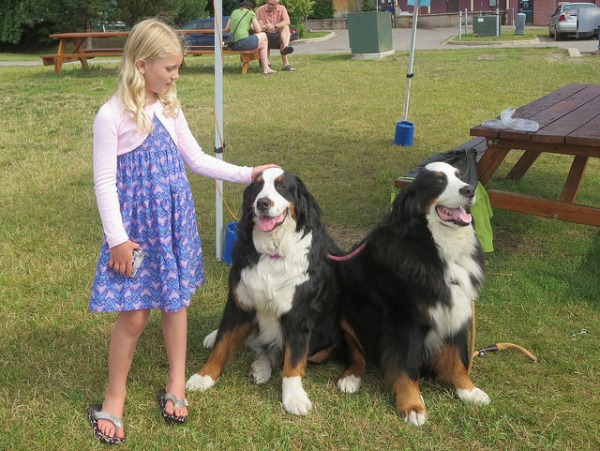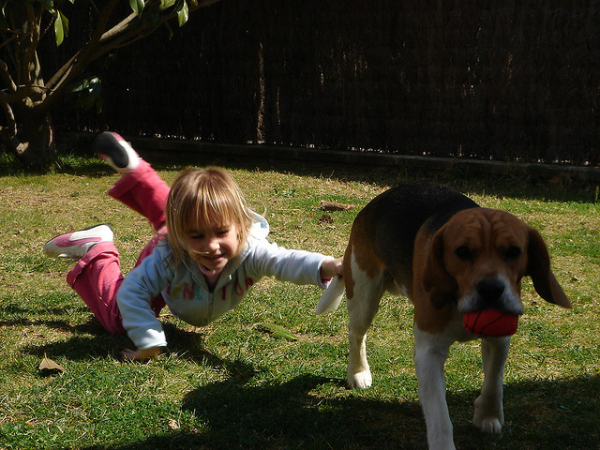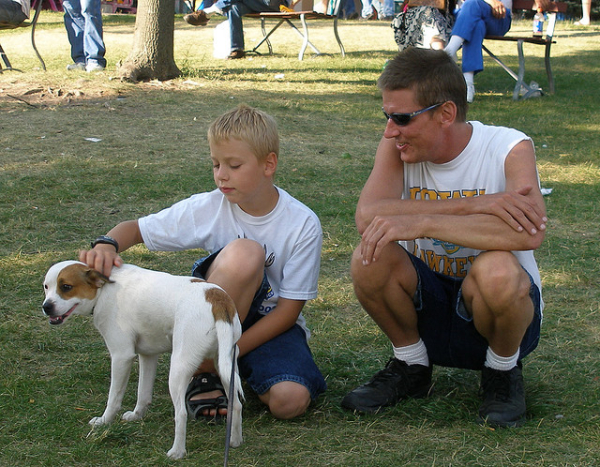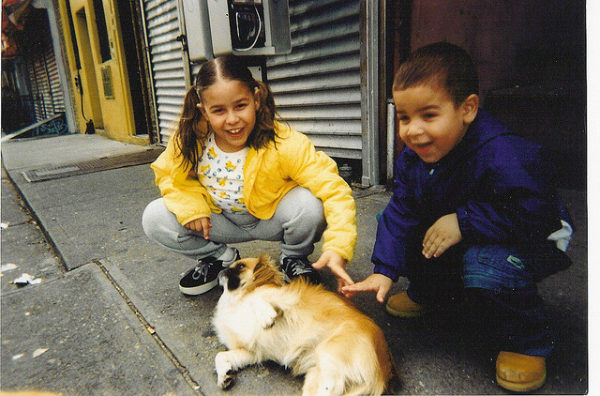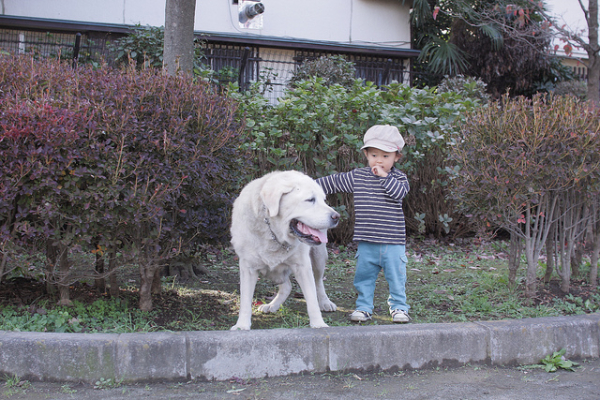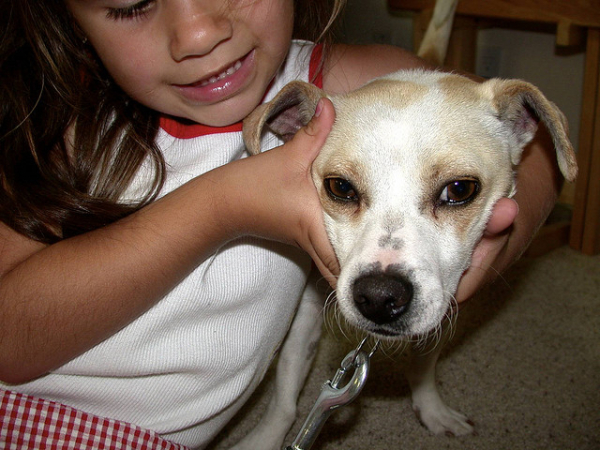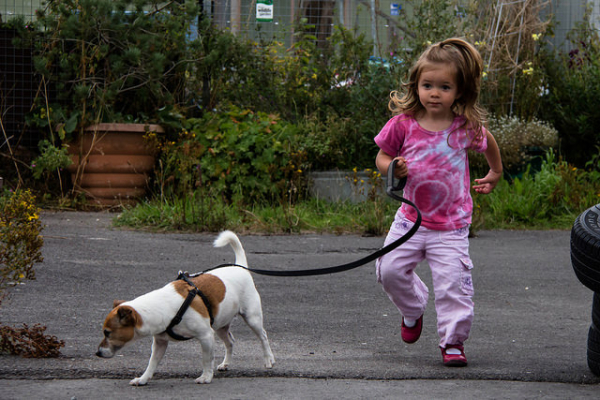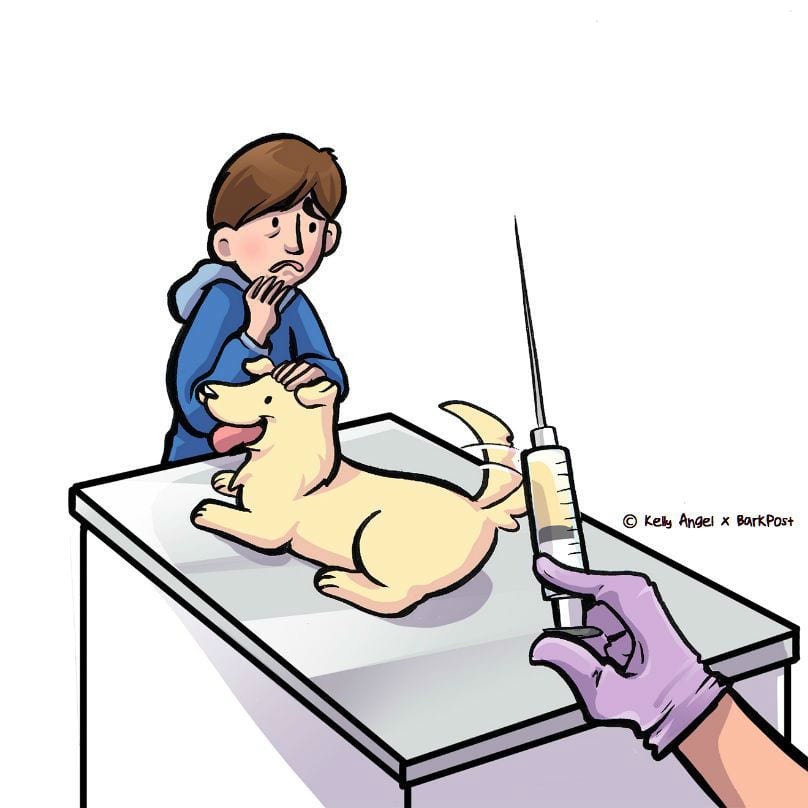This weekend a tragic incident in Newcastle, UK has sparked heated debates over who is to blame when a child is bitten by a dog. Although all seem to agree the child is innocent, the controversy swirls around whether the parents of the child, the owner of the dog, or the dog itself should pay the price.
In this case, the child lost her hand, and the dog is scheduled to lose his life. Meanwhile, the child’s parents and the owners of the dog are surely suffering feelings of loss, guilt and heartache. Clearly every party involved has paid in their own way.
No matter where your opinions lie on this hot button issue, I think we can all agree that there is a need for proactive discussions between parents and children on the topic of dog safety. But where do we begin? On one paw, we want our children to be aware of the danger some dogs may pose, but on the other, we want them to embrace the joy of loving dogs without fear in their hearts. It’s a difficult balance, but it’s one that we all must achieve in order to ensure the safety of our children and our dogs.
1. Approaching dogs
The first thing all children should learn about interacting with dogs is that they should NEVER approach any dog without the permission of a responsible adult and the dog’s owner. We all teach our kids not to talk to strangers, but do they know not to approach strange dogs? Instruct your children to come to you or whichever adult is caring for them should they want to meet a new canine friend.
2. Getting to know the dog
As parents, we are responsible for deciding which dogs we are comfortable allowing our kids to interact with. Don’t just question strangers you meet at the park as to the temperament of their dogs, ask friends, relatives, and the parents of your childrens’ play dates to allow you to meet their dogs before the kids do. Find out from the owners if their dogs are timid around children or fearful of loud noises. Not all dogs can handle the boisterous nature of young children, and that is okay. As long as you know it before an accident occurs.
3. Approaching restrained dogs
Children may feel a false sense of safety approaching a dog that is tied up or confined in some way. In fact, the opposite is true- dogs are more likely to bite when they are tethered or caged. Teasing or reaching for a dog who cannot get away could certainly lead to a bite. The same applies to dogs behind fences. Banging on the wood, reaching over or underneath can be seen as a threat to the dog or its home. Teach kids that these behaviors are unsafe for them and frightening for the dog.
4. Dealing with strays
It’s normal for kids to be curious about a strange dog wandering around their neighborhood. Teach them that seeking an adult’s guidance is the best way they can assist a dog who has gotten lost or is in need of help. We all want to do our part when a dog needs a hand finding its way home, but the safety of all involved must come first.
5. Introducing your child to a new dog
If and when you determine that you want your child to be introduced to a certain dog, there are many things to be aware of. First, handling a pet is a privilege, not a right. If the child refuses to be patient and follow your instructions, remove him from the situation. Children must learn to respect dogs as living beings, not just view them as furry toys. Before any physical touching is permitted, start by having the child give simple commands and reward the dog with treats to build trust.
6. Teaching kids about dogs’ body language
Instructing youngsters in proper body language is key to a successful child-dog experience. Kids are balls of energy and excitement, but displaying that in the presence of a new dog could spell disaster. Teach them to remain quiet and still, allowing the dog to approach when it feels comfortable. Never ever allow a child to chase a dog or back it into a corner.
Instruct children to position themselves alongside of the dog, not face to face which may be seen as threatening. When touching the dog, they should stroke the cheek or under the chin. Again, reaching directly for the face or top of the head may be perceived as a threat by the dog. Discourage them from grabbing or trying to hold the dog. Children love to hug, but unfortunately, most dogs do not!
7. How to behave around dogs
Remind children that dogs have exceptional hearing, and that they should speak very softly to them. A squeal of joy from a little one could make a dog feel confused or frightened. Inside voices and gentle, soothing tones will help the dog feel at ease, and help keep your child in a calm mindset.
Be aware of signals that a dog has had enough child’s play for one day. Nervous dogs may pace, flatten their ears, tuck their tails, retreat, nervously flick their tongues, bear their teeth or growl. At the first indication that a dog is under duress, end the interaction immediately.
8. Educate yourself
Remember, you cannot teach your children how to safely behave around dogs unless you first educate yourself. Consult your veterinarian as to what warning signs to watch for in dogs. Reach out to a local trainer and ask if they offer group training classes that you and your child could participate in. Talk to members in your community about promoting safe practices for children and dogs alike. The goal is to learn and teach respect for dogs, not to develop and pass on fear to our children because of a tragic, isolated incident.
Dr. Sophia Yin is a veterinarian who runs an amazing blog about the art and science of animal behavior. She created posters for children to help them remember the right and wrong ways to interact with dogs. Consider printing these to hang at home, school, daycare or at the playground in your community:
How Kids Should Interact With Dogs
How Kids SHOULDN’T Interact With Dogs
Featured image via Flickr

